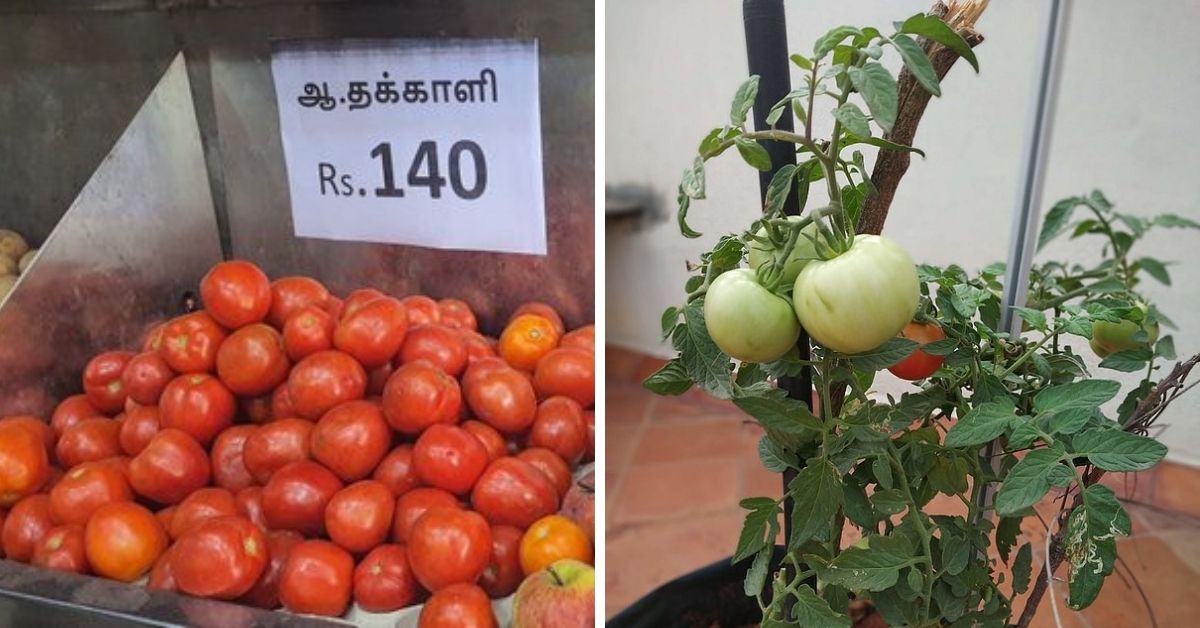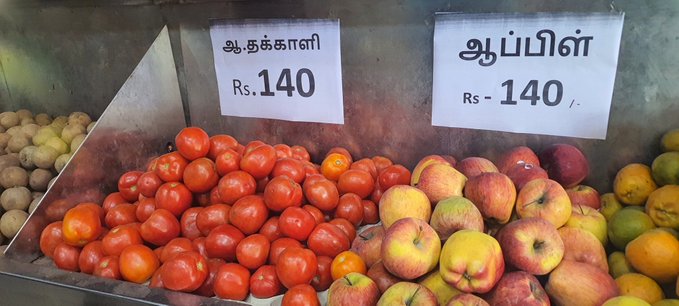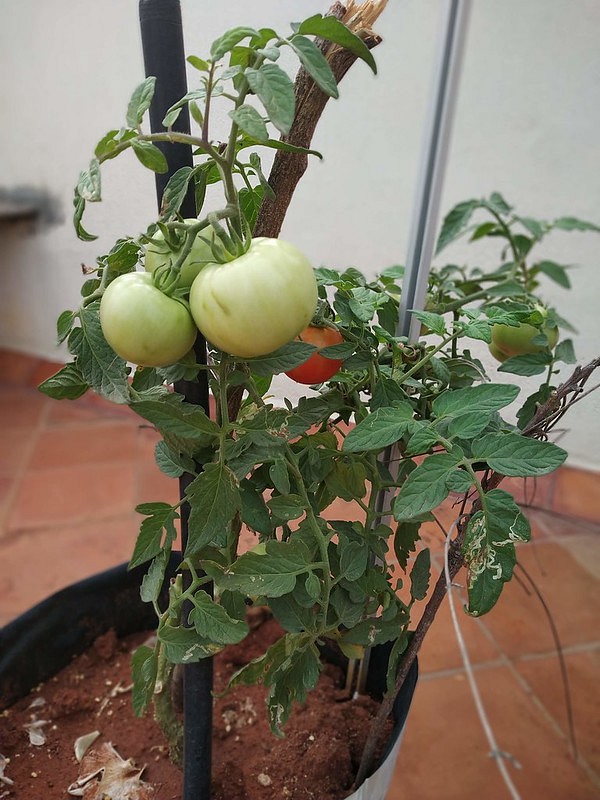How to Grow Tomatoes at Home & the Story of India’s ‘Wilayati Baingan’
As rising prices of tomatoes throw meme-makers into an overdrive, we trace the history of India’s ‘Wilayati Baingan’ and share 10 easy steps to help you grow tomatoes at home.

In the last few days, the steep rise in the price of tomatoes has left Indians scratching their heads in dismay. However, as the retail price of tomatoes crossed the Rs 100 per kg mark in various states, Tamil Nadu being the worst affected, people across the country are finding solace through some truly hilarious memes.
#Tomato Rs 120/kg ….
Me going to make Tomato soup …
Meanwhile ..mom: pic.twitter.com/0qGHSnf2s2
— Varsha saandilyae (@saandilyae) November 23, 2021
People who bought two kgs of #Tomato pic.twitter.com/jujmKQD3Ai
— Abhishek Mitlakod (@Abhishek5888) November 23, 2021
Racing ahead #TomatoPrice and no looking back ?#PetrolPrice #Tomato pic.twitter.com/T152NgnKBM
— Simran Kaur (@kaursimran_ind) November 24, 2021
Interestingly, few know that tomato is a relatively recent import to the Indian subcontinent. In the 16th century, tomatoes first arrived in India from South America with Portuguese spice merchants. One of the earliest historical accounts of the tomato on the Indian subcontinent comes from a 19th-century cookbook, Nuskha-i Niyamat Khaan (1801).
In the book, a recipe for tomato soup is titled ‘Tarkeeb-i Tomata Sup Yaani Shorba Wilayati Baingan’ (wilayati baingan translates to ‘foreign eggplant’). Throughout the written recipe, the vegetable is referred to as baingan (eggplant, a more common vegetable back then).
Many grandmothers in different parts of India still call tomatoes ‘wilayati’ (bilahi bengena in Assam, bilati beguna in Bengal, and belavangi in Maharashtra). Talking of ‘wilayati’, that’s where the English word ‘Blighty’ originated from — it was used by Indians to refer to colonial Englishmen, and later for British goods not known to India!
That said, Indian cooks would soon learn that the glossy globes from ‘wilayat’ (abroad) impart a beautiful red hue and a sweet-sour dimension to dals, gravies, and chutneys — a revelation that would go on to forever transform Indian dishes.

Unsurprisingly, in less than a hundred years, tomatoes became an everyday ingredient in the Indian kitchen. Written in 1832, the book ‘Flora Indica’ by William Roxburgh records tomatoes being commonly used throughout the Indian subcontinent.
Today in South India, the tomato’s probable entry point into the country, breakfasts are filled with tomato-y offerings such as thakkali (tomato) chutney, tomato rice, and the ever-present sambar to accompany their idli-vada.
In North India, tomatoes are an integral part of ‘mother’ gravies where chopped onions and tomatoes act as the base to any kind of vegetable or protein curry – the decadent makhni and lababdar being among the best-loved avatars of such gravies.

So now that we have traced the tale of India’s ‘Wilayati Baingan’, here are ten easy steps to help you grow your tomatoes at home. But before that, check out this fun fact: In 1978, America made a musical parody, “Attack of the Killer Tomatoes”, in which giant red tomatoes terrorise the country. “The nation is in chaos. Can nothing stop this tomato onslaught?” goes a dialogue from the drama!
How To Grow Tomatoes at Home:

> Cut a fresh organic tomato into slices about 1/4-inch thick.
> Pick a pot with drainage holes. Fill it up with potting soil almost to the top, leaving a few inches of room. Do note that tomatoes can grow in virtually any type of soil except for clayey soil.
> Place your tomato slices on the soil, spaced out in a circular pattern (don’t put in too many, crowding hampers growth). Cover them with a light layer of potting soil, ensuring that they aren’t buried too deep.
> Keep the pot in a warm, well-ventilated spot that gets both sun and shade. Water it daily to keep the soil moist (but not too wet). The seedlings should make an appearance in 10-14 days.
> Seedlings require little watering, so use a spray bottle to mist the soil. Once they are a little bigger, you can pick out the strongest-looking seedlings and transfer them to a bigger pot to help them grow into full-fledged plants.
> Once the plants start growing, add wooden sticks to provide support to the stem. Otherwise, they may bend under the weight of their fruits.
> As for when you can expect to harvest your home-grown tomatoes, it will take around 60-70 days after transplantation for your plant to produce full-grown tomatoes. So harvest the one that you feel is ripe enough.
Watch more:
(Edited by Vinayak Hegde)
If you found our stories insightful, informative, or even just enjoyable, we invite you to consider making a voluntary payment to support the work we do at The Better India. Your contribution helps us continue producing quality content that educates, inspires, and drives positive change.
Choose one of the payment options below for your contribution-
By paying for the stories you value, you directly contribute to sustaining our efforts focused on making a difference in the world. Together, let's ensure that impactful stories continue to be told and shared, enriching lives and communities alike.
Thank you for your support. Here are some frequently asked questions you might find helpful to know why you are contributing?


This story made me
-
97
-
121
-
89
-
167














